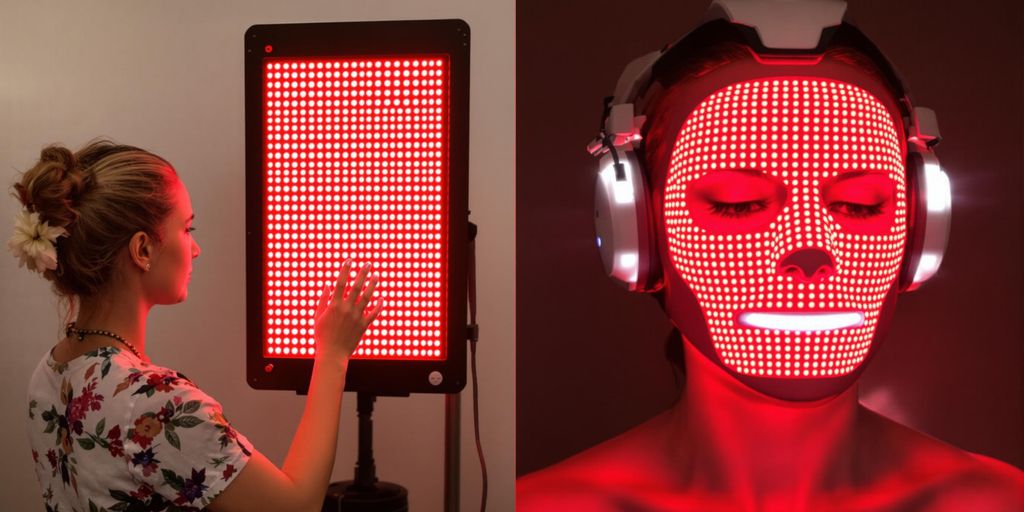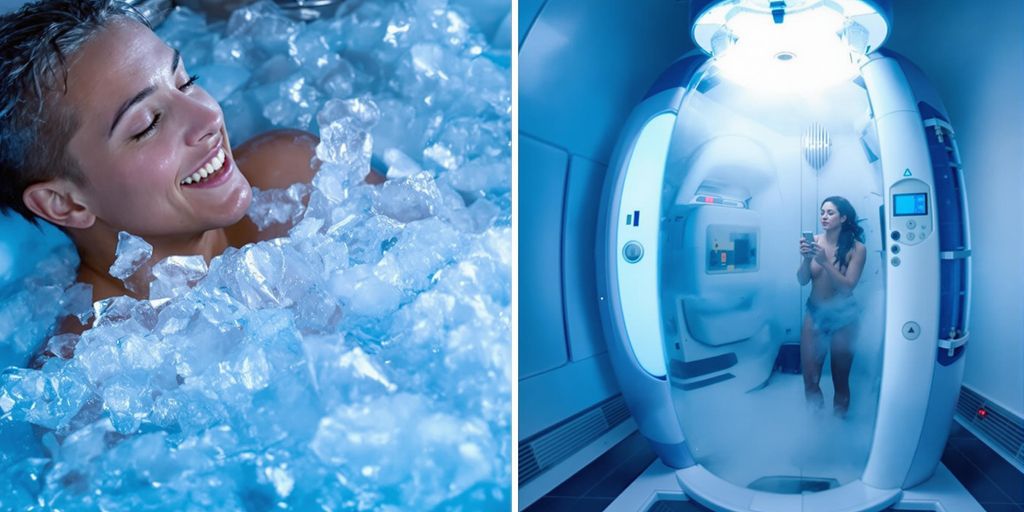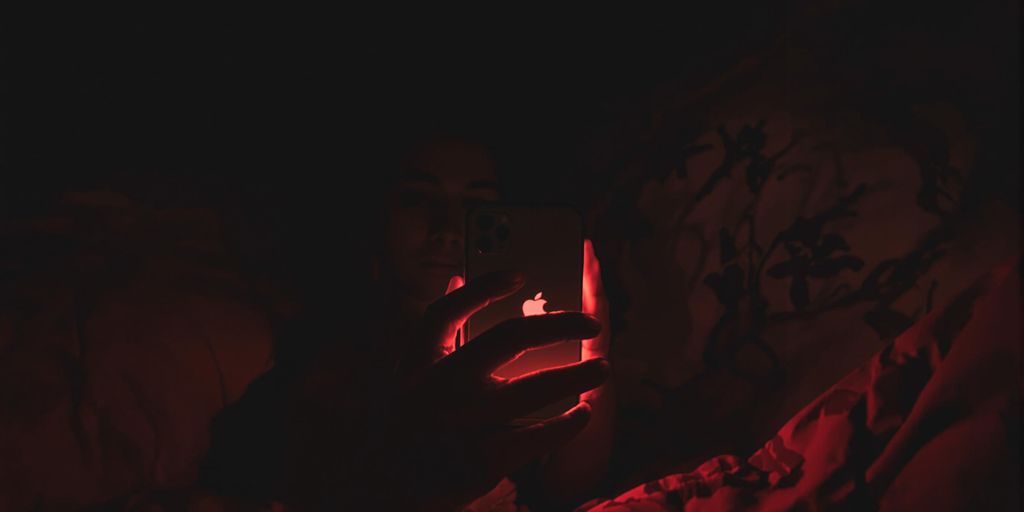Red light therapy has become a popular treatment for various skin and health issues. With two main options available—red light therapy panels and red light masks—it’s essential to understand the differences between them. Each has its own set of advantages and drawbacks, making them suitable for different needs. In this article, we will explore what red light therapy is, how it works, and how panels and masks compare to help you decide which might be best for you.
Key Takeaways
- Red light therapy panels cover larger body areas, while masks are focused on the face.
- Panels are often more powerful and efficient, providing quicker results than masks.
- Masks are portable and user-friendly, ideal for those with busy lifestyles.
- Cost-wise, masks are generally cheaper, but panels offer more long-term value.
- Choosing between the two depends on your specific needs—whether it’s targeted facial care or broader body treatment.
What Is Red Light Therapy?
Okay, so you’ve probably heard about red light therapy, but what is it, really? It’s not some crazy sci-fi thing, I promise! Basically, it’s a treatment that uses specific wavelengths of light to help your body heal and rejuvenate. Think of it like this: it’s like giving your cells a little energy boost.
Red light therapy, also known as photobiomodulation, involves exposing your skin to low levels of red or near-infrared light. These wavelengths usually fall between 630 to 680 nanometers for red light. It’s all about using the power of specific wavelengths to penetrate your skin.
Here’s the deal:
- The light stimulates the mitochondria in your cells. Mitochondria are like the powerhouses of your cells, responsible for producing energy.
- This stimulation leads to increased production of ATP (adenosine triphosphate), which is the main energy currency of your cells.
- With more energy, your cells can function more efficiently, repair damage, and rejuvenate faster. It can support the natural production of collagen and elastin.
It’s important to note that red light therapy is different from laser therapy. Red light therapy uses lower-level light and doesn’t heat or damage the skin. It’s a non-invasive treatment that’s generally considered safe.
How Red Light Therapy Works
Okay, so you’re probably wondering how shining a red light on yourself can actually do anything. It sounds a little out there, right? But stick with me. Basically, red light therapy, also known as photobiomodulation, is all about using specific wavelengths of light to kickstart some good stuff in your cells.
Think of it like this: your cells have these little powerhouses called mitochondria. These mitochondria are super important because they make energy for your cells to function. When you expose your skin to red and near-infrared light, these wavelengths penetrate your skin and get absorbed by the mitochondria. This absorption stimulates the mitochondria, encouraging them to produce more ATP (adenosine triphosphate), which is basically the fuel that powers your cells.
With this extra boost of energy, your cells can work more efficiently. This can lead to a bunch of benefits, like:
- Faster healing of wounds and injuries
- Reduced inflammation
- Improved skin health, including collagen production
- Pain relief
It’s like giving your cells a supercharged battery, allowing them to repair and rejuvenate themselves at a faster rate. The light emitted by face masks may not penetrate deeply into your skin without covering enough surface area, which potentially impacts their effectiveness. Studies indicate that placing red light therapy between 6” and 18’’ from your skin proves effective. At this distance, concentrated irradiation is achieved, effectively covering a larger surface area. Research indicates that red light therapy can reach depths ranging from 4-10 millimeters (mm), with an average 6mm penetration. The targeted focus of LED masks may not effectively cover the entire skin surface.
Understanding Wavelengths: What Makes Red Light Effective?
Okay, so let’s talk about what actually makes red light therapy work. It’s not just about shining a red light on yourself and hoping for the best. It’s way more specific than that, and it all comes down to wavelengths. Think of it like this: different wavelengths of light do different things. For red light therapy, we’re mainly talking about red light (around 630-660nm) and near-infrared (NIR) light (around 810-850nm). These aren’t just random numbers; they’re the sweet spot for getting the benefits we want.
The right wavelengths are key to stimulating cellular energy production stimulate cellular energy production. Red light is great because it’s easily absorbed by the surface of your skin. This is why it’s often used for things like skin rejuvenation and boosting blood flow. NIR light, on the other hand, goes deeper into your body. It can help with things like inflammation and even pain. It’s like they’re working together to give you a one-two punch of therapeutic benefits.
It’s also worth noting that some devices might throw in other wavelengths, like blue light (which is sometimes used for acne). But for general red light therapy benefits, you’ll want to focus on those red and near-infrared wavelengths. They’re the ones that have been most studied and shown to be effective.
Advantages of Using Red Light Panels
Red light panels usually offer consistent and reliable wavelengths. This means you’re getting a steady dose of the light that’s actually going to help you. Some panels even let you adjust the wavelengths, so you can customize your treatment based on what you’re trying to achieve. Plus, panels can cover a larger area of your body, which is great if you’re looking for overall wellness benefits.
Advantages of Using Red Light Masks
Red light masks are super convenient for targeting specific areas, like your face. They’re easy to use and often more affordable than panels. However, the wavelengths they use can be a bit of a mixed bag. Some masks might not have the ideal wavelengths or might not deliver them consistently. So, it’s important to do your research and make sure you’re getting a mask that uses the right wavelengths for your needs.
Comparing Red Light Therapy Panels and Masks
| Feature | Red Light Panels | Red Light Masks |
|---|---|---|
| Wavelengths | Consistent and reliable, often adjustable | Can be inconsistent, check specifications |
| Coverage Area | Larger, good for overall wellness | Smaller, targeted for specific areas (e.g., face) |
| Convenience | Less portable | Highly portable |
| Cost | Generally more expensive | Generally more affordable |
Effectiveness and Results
Okay, so how well do these things actually work? Well, it depends. Both panels and masks can be effective, but it’s all about using them correctly and consistently. With panels, you’re getting a more powerful and consistent dose of light, which can lead to faster and more noticeable results. Masks can still be effective, but you might need to use them more often or for longer periods to see the same benefits. Also, remember that everyone’s different, so what works for one person might not work for another.
Cost and Accessibility
Let’s be real, cost is a big factor for most of us. Red light panels can be a bit of an investment upfront. But if you’re planning on using red light therapy regularly, they can be worth it in the long run. Masks are generally more affordable, making them a good option if you’re just starting out or want to target a specific area. Just make sure you’re not sacrificing quality for price. You want a device that actually delivers the right wavelengths and irradiance levels to get the benefits you’re looking for. It’s essential to check the specifications of each device to understand the irradiance levels they provide for practical comparison.
The Importance of Irradiance (Light Power Output)
Irradiance is super important when it comes to red light therapy. It basically tells you how strong the light is. Without enough power, the light won’t go deep enough into your skin to actually do anything. Think of it like this: more power usually means faster results and shorter treatment times. Makes sense, right?
Advantages of Using Red Light Panels
Red light therapy panels are like the powerhouses of the red light world. They’re built to give you as much energy as possible. You’ll often find that they have metal parts, cooling fans, and plug right into the wall. This lets them pump out a lot of light. Some panels can even light up a whole room! At a normal distance, like 6 inches, panels can give you around 40–60 milliwatts per square centimeter (mW/cm²). Plus, when you look at the cost per watt of light, panels are way cheaper. We’re talking $4 to $10 per watt, which is a steal compared to masks.
Advantages of Using Red Light Masks
Red light masks? Well, they’re all about being easy to use. They’re light, you can take them anywhere, and they don’t need to be plugged into a wall all the time. Most run on batteries, so you can walk around while you’re using them. No setup needed, just slap it on your face and go. The Hooga light therapy mask is a good example, giving you a decent irradiance of 40mW/cm².
Comparing Red Light Therapy Panels and Masks
So, panels give you more power and cover a bigger area, while masks are more about being easy to carry around and use. Panels are great if you want to treat a larger part of your body at once, or if you want faster treatment times. Masks are good if you only want to treat your face and want something you can use anywhere. But, masks often don’t give you as much power because the light fades fast as you move away from your face. This means you might not get the results you want without using them for a really long time.
Effectiveness and Results
To get the most out of red light therapy, you need to hit a certain dose of energy. Studies show that around 10 joules per square centimeter (J/cm²) is good for your skin. How much you get depends on how strong the device is and how long you use it. Light from face masks might not go deep enough into your skin, which can affect how well they work. Studies show that keeping the light between 6 and 18 inches from your skin works well, letting the light cover a bigger area. Red light can usually go about 4-10 millimeters into your skin, with 6mm being the average.
Cost and Accessibility
When you’re trying to figure out if a red light therapy device is worth the money, think about the cost per watt of light it gives you. Panels are the clear winner here, costing around $4 to $10 per watt. Masks, on the other hand, can cost anywhere from $16 to $200 per watt. So, even though masks might seem good because they’re easy to carry around, they’re not as cheap in the long run because they don’t give you as much power and you have to use them for longer. You can find basic therapy panels for around $100, while the bigger, fancier ones can cost hundreds or even over a thousand dollars.
Who Should Use Panels vs. Masks?
Okay, so you’re trying to figure out if a red light panel or a mask is better for you. It really boils down to your lifestyle, budget, and what you’re hoping to get out of red light therapy. Let’s break it down.
Advantages of Using Red Light Panels
Red light panels are great if you’re looking for more comprehensive treatment. They cover a larger area, so you can target your whole body or large sections at once. Think of it like this:
- Full-body coverage: If you want to treat muscle soreness, joint pain, or skin issues on your back, legs, or arms, a panel is the way to go. Masks are just too small for that.
- Consistent dosage: Panels usually have more LEDs and deliver a more consistent light dosage across the treatment area. This is important for getting the best results.
- Long-term investment: While panels cost more upfront, they’re generally more durable and have longer warranties. So, if you’re serious about red light therapy, a panel might be a better long-term investment.
Advantages of Using Red Light Masks
Masks are all about convenience and targeted treatment. They’re perfect if you have specific facial skin concerns and want a hassle-free way to address them. Here’s why you might choose a mask:
- Targeted facial treatment: Masks are designed to fit your face perfectly, so you can target wrinkles, acne, and other skin issues with precision.
- Convenience and portability: Masks are easy to use and take with you on the go. You can use them while you’re watching TV, reading a book, or even traveling.
- Lower cost: Masks are generally more affordable than panels, making them a good option if you’re on a budget or just want to try red light therapy without spending a lot of money.
Comparing Red Light Therapy Panels and Masks
| Feature | Red Light Panels | Red Light Masks |
|---|---|---|
| Coverage Area | Large, full-body or targeted areas | Small, primarily facial |
| Convenience | Requires dedicated space, less portable | Highly portable, easy to use anywhere |
| Cost | Higher upfront cost | Lower upfront cost |
| Treatment Focus | Broader range of conditions, full-body benefits | Specific facial skin concerns |
| Durability | Generally more durable, longer warranties | May be less durable, shorter warranties |
Effectiveness and Results
When it comes to effectiveness, both panels and masks can deliver results, but it depends on your goals. Panels are better for treating larger areas and addressing a wider range of conditions. Masks are great for targeted facial treatments and can be very effective for improving skin health. However, masks often have gaps between the LEDs, which can lead to inconsistent results.
Cost and Accessibility
Cost is a big factor for many people. Masks are generally more accessible because they’re cheaper. However, keep in mind that you might need to replace a mask sooner than a panel, so the long-term cost could be higher. Panels are a bigger investment upfront, but they can last longer and provide more comprehensive treatment.
Pros and Cons of Red Light Panels and Masks
Okay, so you’re trying to figure out whether a red light panel or a mask is the right choice for you. Let’s break down the good and the bad of each so you can make a smart decision. It’s not always as straightforward as one being “better” than the other; it really depends on what you’re hoping to get out of red light therapy.
Advantages of Using Red Light Panels
Red light panels are like the SUVs of the red light therapy world – they’re bigger, more powerful, and can do more. Think of them as your all-in-one solution for treating larger areas of your body.
- Panels offer versatility. You can use them on pretty much any part of your body that needs some red light love. Back pain? Legs feeling tired? A panel can cover it.
- They give you intensity and coverage. Because they’re larger, panels can treat a bigger area at once, and often with more power. This can mean faster, more noticeable results.
- Customization is a big plus. Many panels let you adjust the intensity and even the wavelength of the light. This means you can really tailor your treatment to whatever specific issue you’re dealing with, from muscle recovery to skin problems.
Advantages of Using Red Light Masks
Red light masks are more like compact cars – efficient, focused, and easy to handle. They’re designed with one main goal in mind: your face.
- Masks offer targeted care. They’re specifically designed to treat facial skin issues like acne, wrinkles, and uneven skin tone. If your main concern is your face, a mask can be a great choice.
- They’re super convenient. Most masks are hands-free and have automated sessions. You can just set it, relax, and let the mask do its thing. Perfect for busy people.
- Masks are generally more cost-effective. They’re usually cheaper than full-sized panels, which makes them a more accessible option if you’re on a budget or just want to try out red light therapy without a huge investment.
Comparing Red Light Therapy Panels and Masks
So, how do you choose? Here’s a quick comparison to help you out:
| Feature | Red Light Panels | Red Light Masks |
|---|---|---|
| Coverage Area | Large, full-body | Small, face only |
| Intensity | High, adjustable | Lower |
| Versatility | Treats various body parts and conditions | Primarily for facial skin concerns |
| Cost | Higher | Lower |
| Convenience | Less portable, requires more space | Highly portable, easy to use |
| Treatment Time | Varies, can be shorter due to higher intensity | May require longer sessions due to lower intensity |
Effectiveness and Results
When it comes to effectiveness, both panels and masks can deliver results, but it depends on what you’re treating. Panels, with their higher intensity and larger coverage area, might give you more noticeable results faster, especially if you’re treating a larger area or a deeper issue. Masks are great for surface-level skin improvements on your face.
Cost and Accessibility
Cost is a big factor for many people. Masks are generally more affordable and easier to find. Panels can be a bigger investment, but if you’re serious about red light therapy and want to treat multiple areas of your body, they might be worth the extra money. Think about it like this: are you buying a tool for a specific job, or a more versatile tool that can handle many tasks?
Conclusion: Which is Right for You?
Okay, so we’ve gone through the ins and outs of red light therapy panels and masks. Now, how do you actually pick the right one for you? It really boils down to your specific needs, budget, and how much effort you’re willing to put in.
Think about what you’re trying to achieve and how often you plan to use the device. If you’re targeting your whole body or want more power, a panel is probably the way to go. If you’re mainly concerned with facial skin issues and want something quick and easy, a mask might be a better fit. Don’t forget to consider the long-term costs, too. While masks might seem cheaper upfront, the effectiveness of red light therapy panels makes them a better investment in the long run.
Final Thoughts on Red Light Therapy Options
In the end, choosing between red light therapy panels and masks really depends on what you need. If you’re mainly focused on your face and want something easy to use, a mask might be the way to go. They’re convenient and can fit into a busy schedule. But if you’re looking for something that covers more ground and offers better results in less time, panels are the better choice. They might cost a bit more upfront, but they pack a punch with their power and versatility. So, think about your goals and how you plan to use the device. That’ll help you make the right call for your wellness journey.
Frequently Asked Questions
What is red light therapy?
Red light therapy is a treatment that uses low-level wavelengths of light to help heal and improve skin health, reduce pain, and promote recovery.
How do red light therapy panels work?
Red light therapy panels emit red light that penetrates the skin, helping to boost collagen production, reduce inflammation, and improve circulation.
What are the benefits of using red light therapy masks?
Red light therapy masks are great for targeting facial issues like acne, wrinkles, and uneven skin tone. They are convenient and easy to use.
Are red light therapy panels better than masks?
Panels cover larger areas of the body and provide more power, making them effective for overall wellness, while masks are better for focused facial treatments.
How long should I use red light therapy?
Sessions typically last between 10 to 20 minutes, depending on the device and area being treated.
Can anyone use red light therapy?
Most people can use red light therapy, but it’s best to consult a doctor if you have specific health concerns or conditions.
How often should I use red light therapy?
For best results, many users recommend using red light therapy 3 to 5 times a week.
Is red light therapy safe?
Yes, red light therapy is generally considered safe, with few side effects, making it a popular choice for many.




